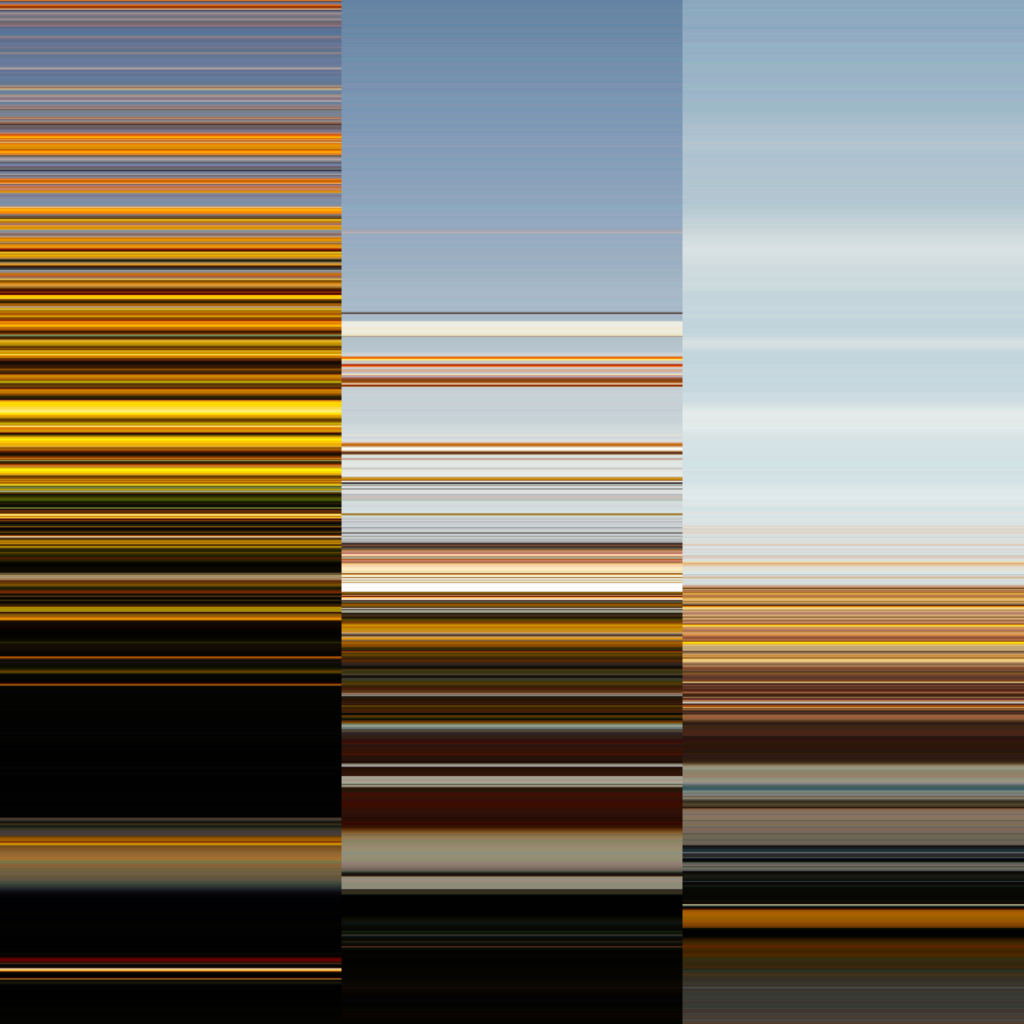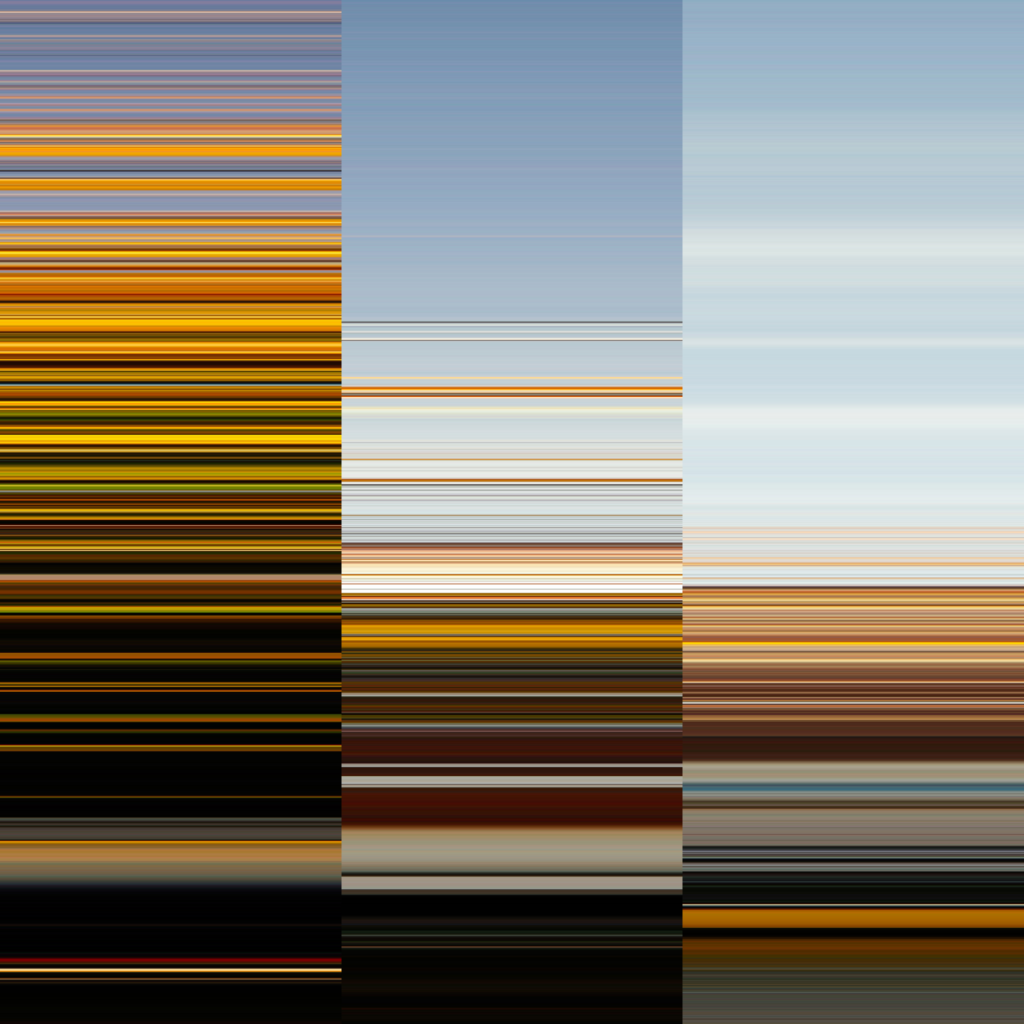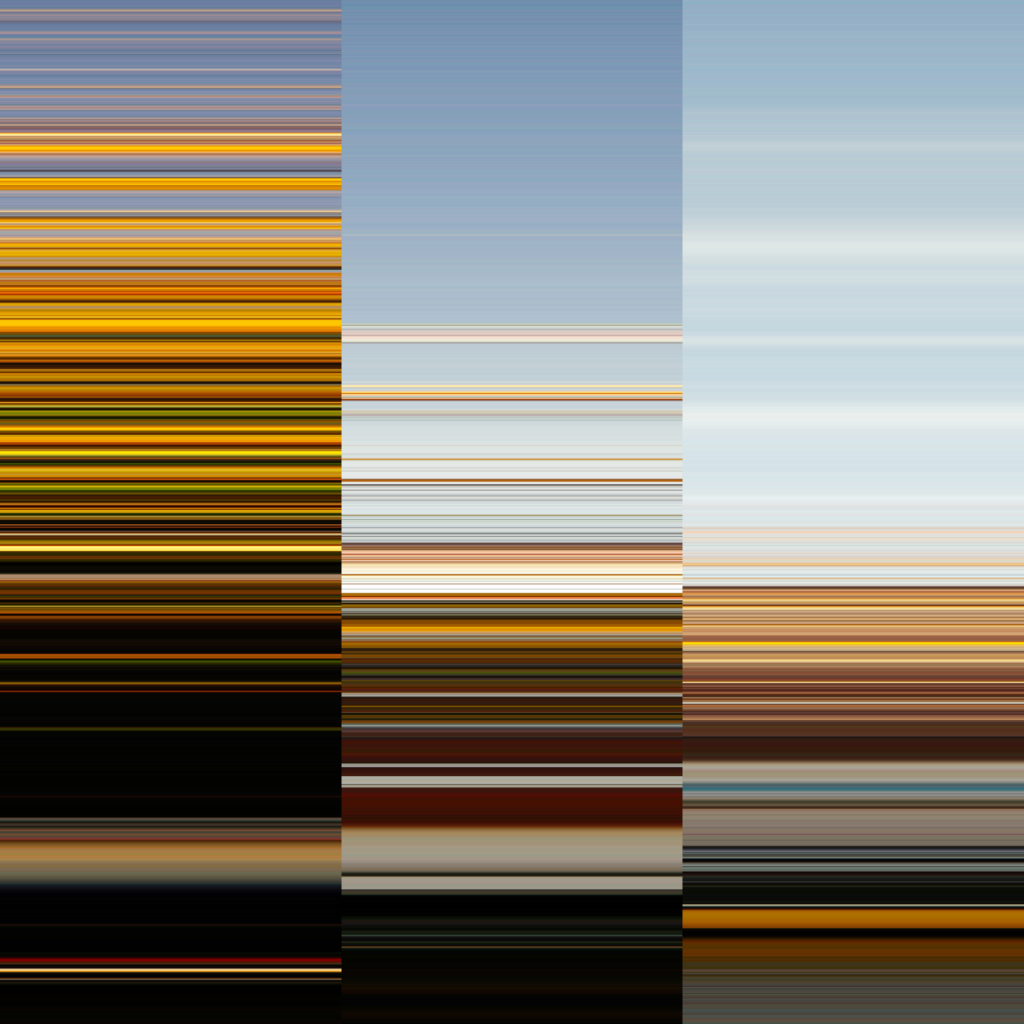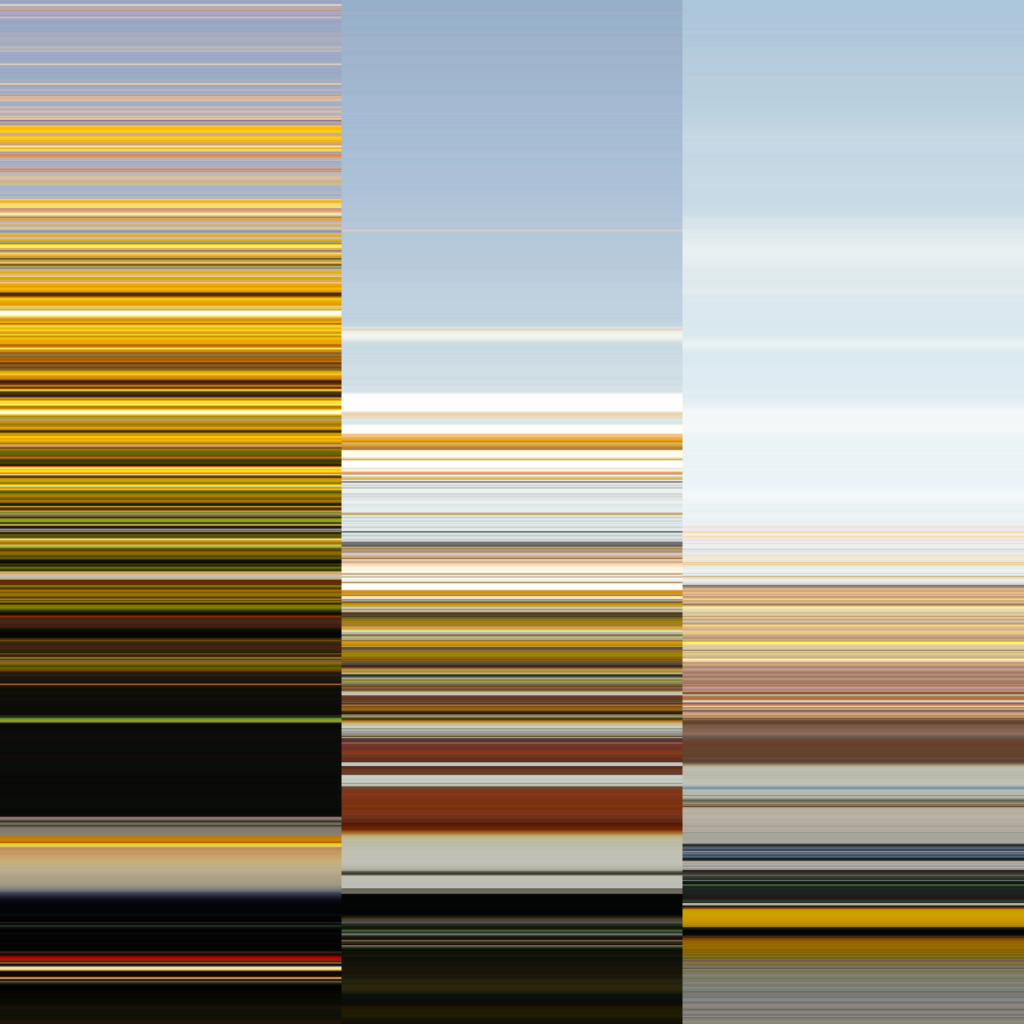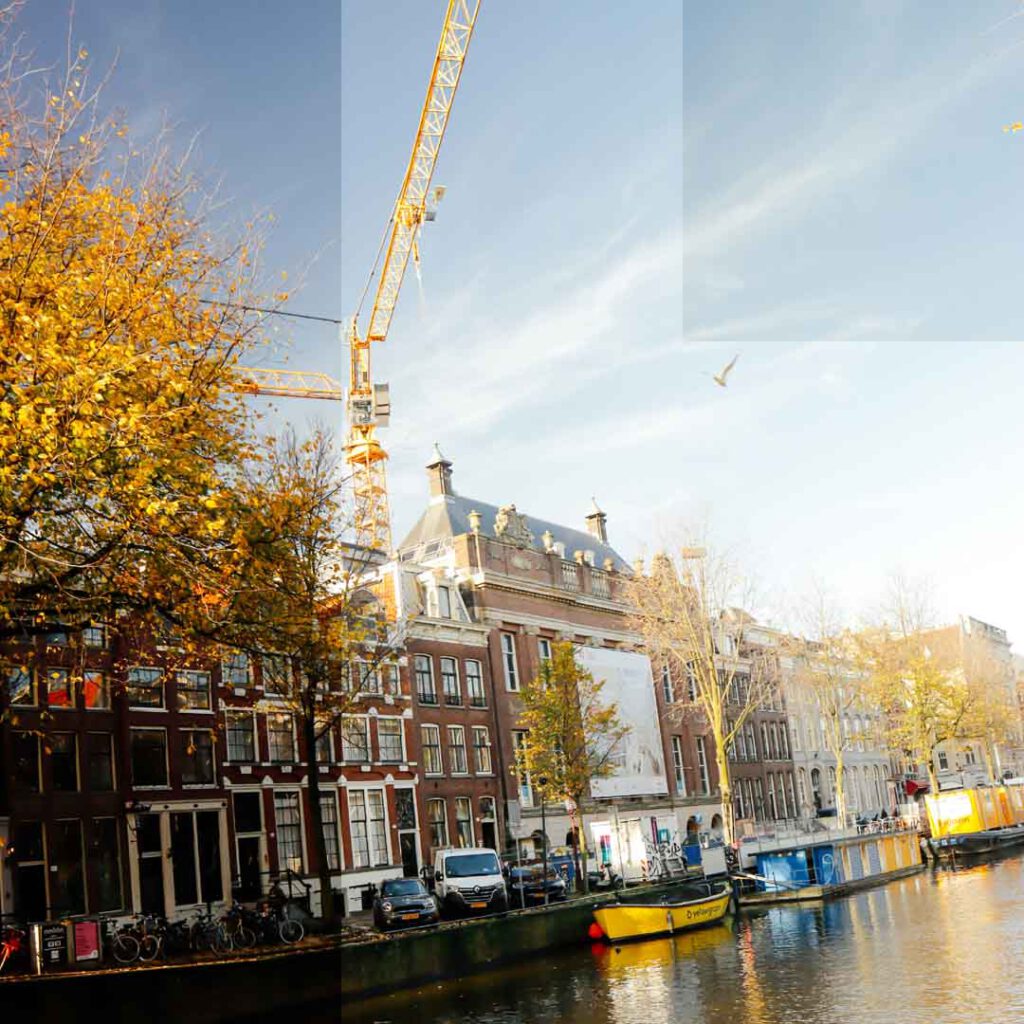
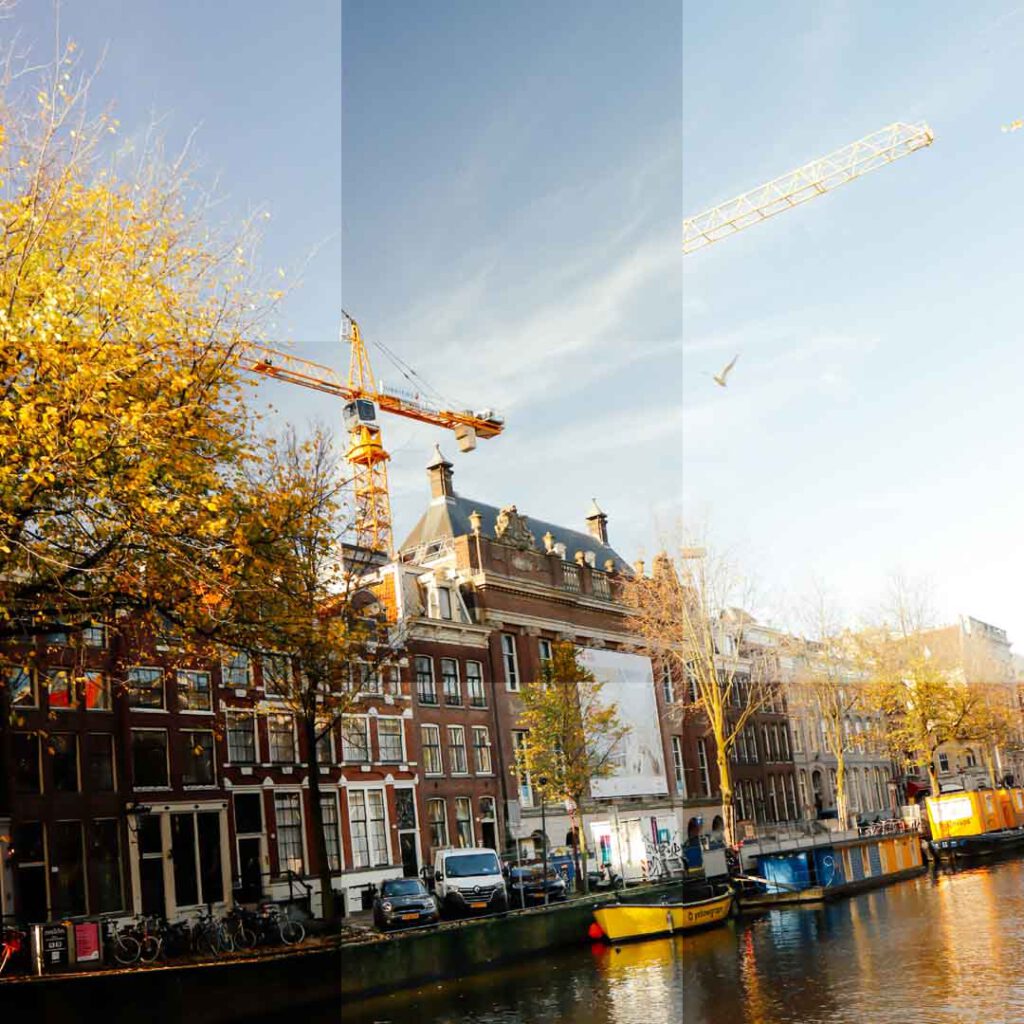
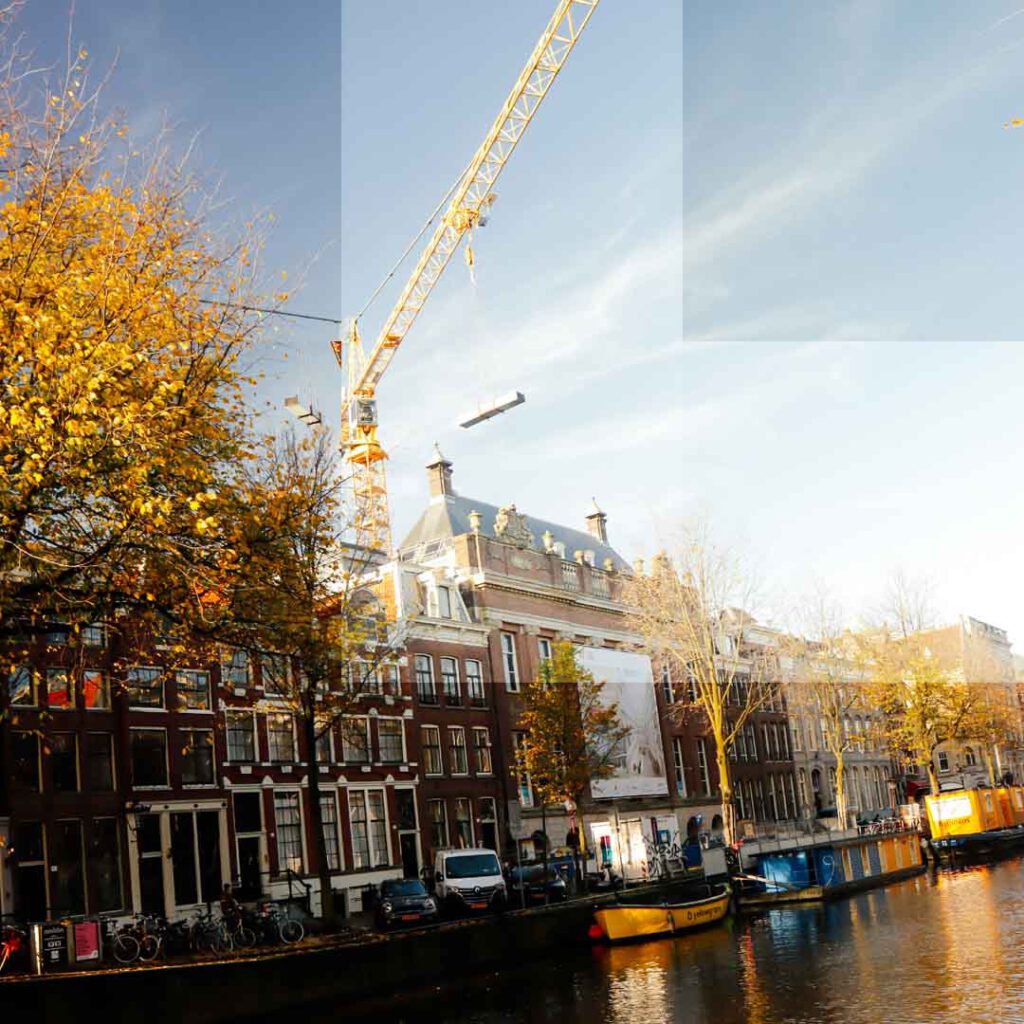
In this phase of our exploration, we applied pixel manipulation techniques to images of various urban locations, expanding our work beyond specific landmarks. Drawing inspiration from digital art, we used the pixel selector tool in Photoshop to create a new layer of abstraction. By selecting individual rows of pixels-either horizontally or vertically-we extended these lines across the canvas, resulting in streaks of color and texture that transformed the original images.
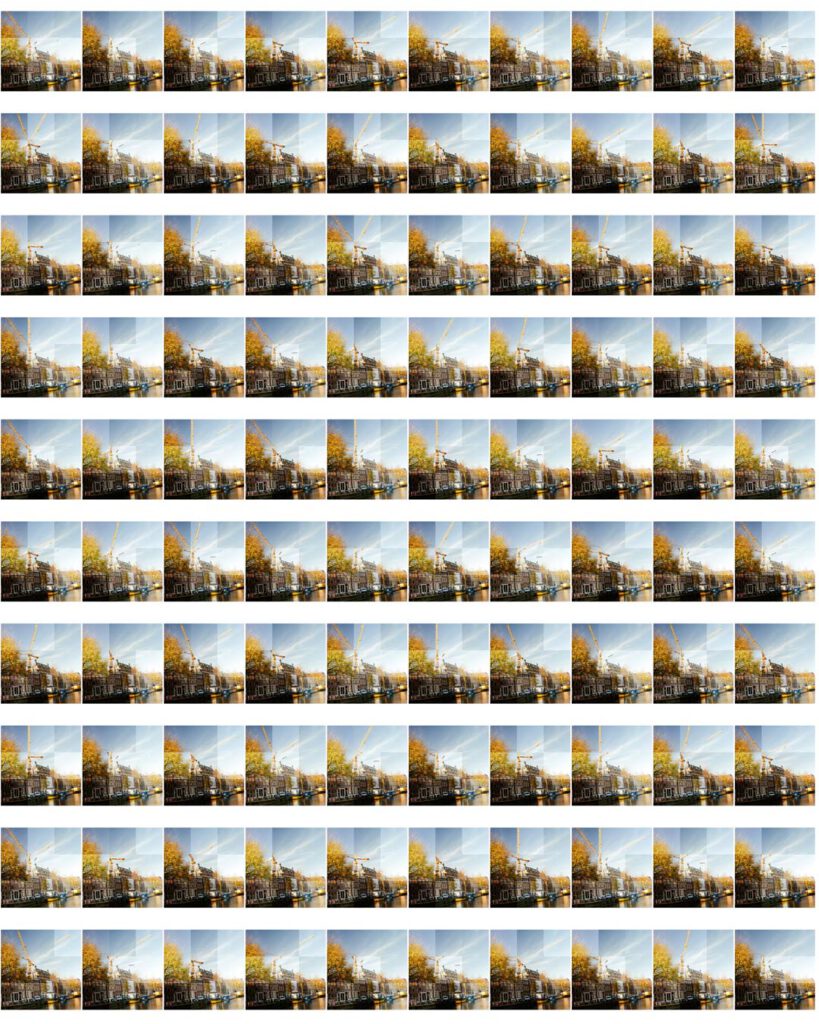
This technique mimics the visual effects of time-lapse photography, where long exposures blur movement across a frame. However, rather than capturing time through natural means, we digitally manipulated the images, allowing us to compress moments in time into a single visual plane. This approach created an interplay between structure and fluidity, capturing the tension between movement and stillness in the urban environment.
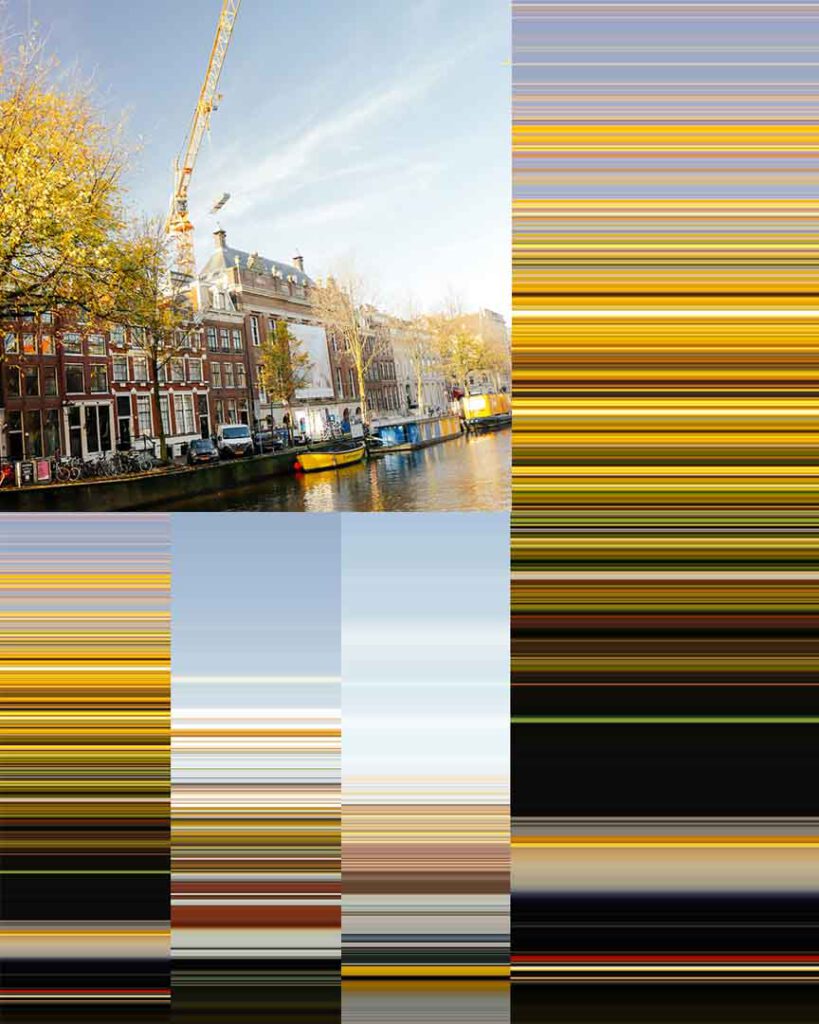
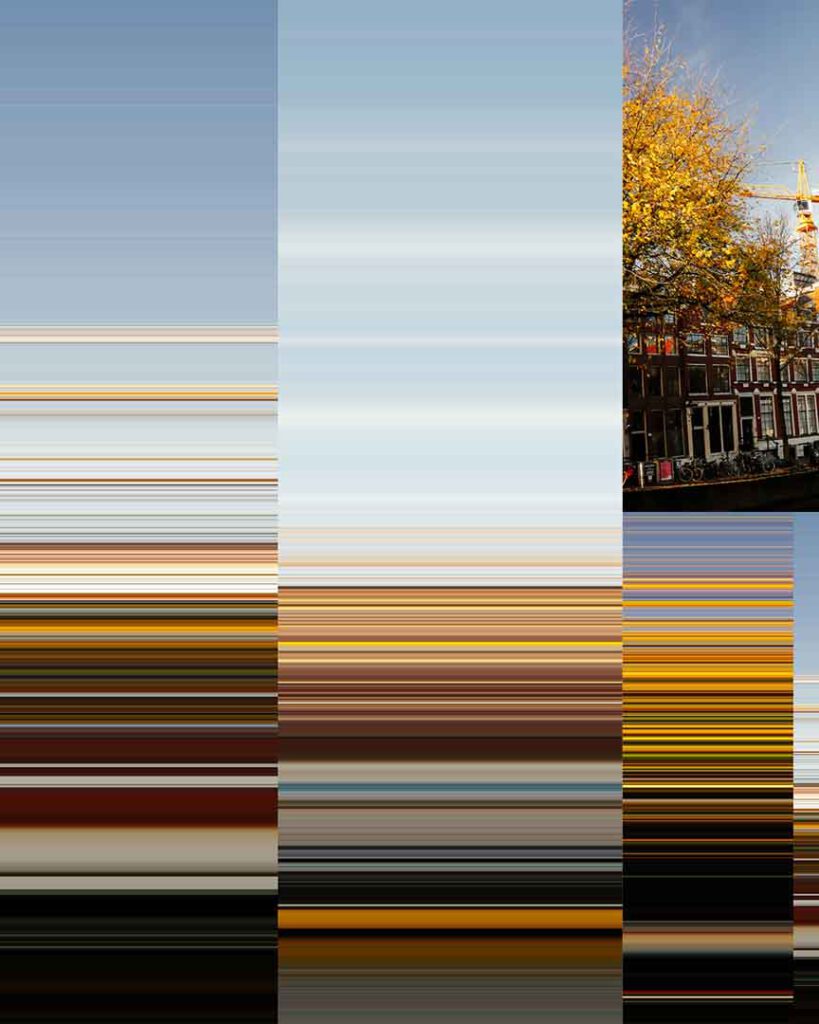
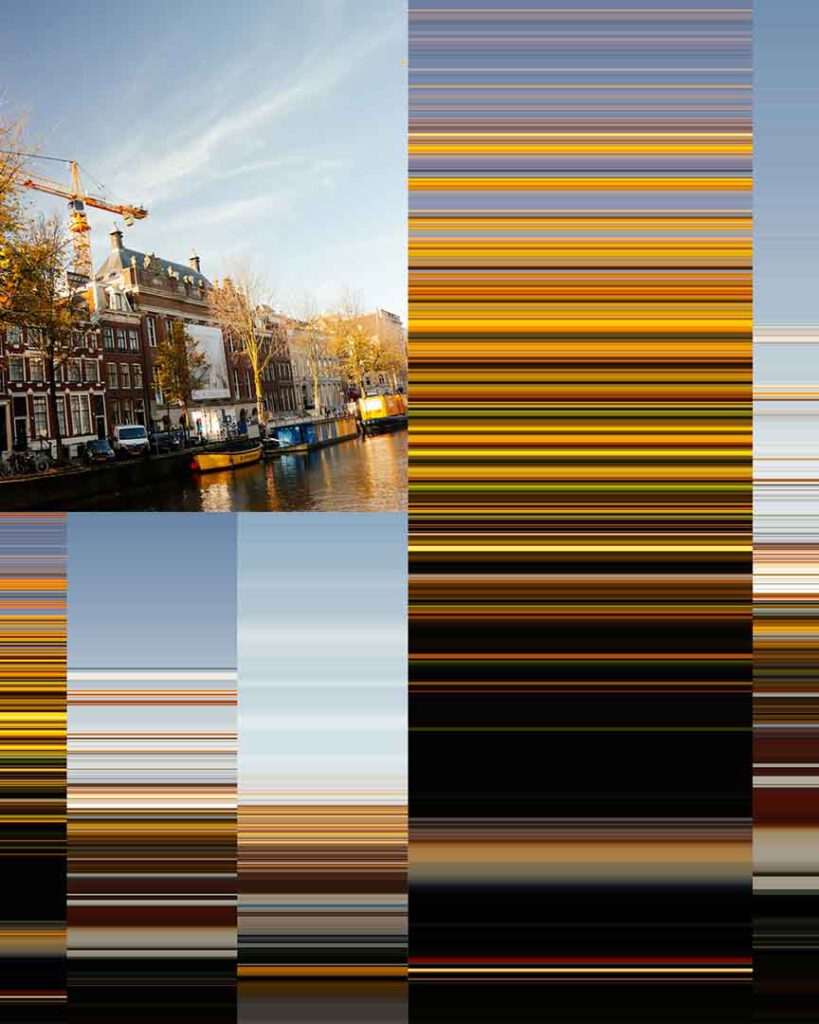
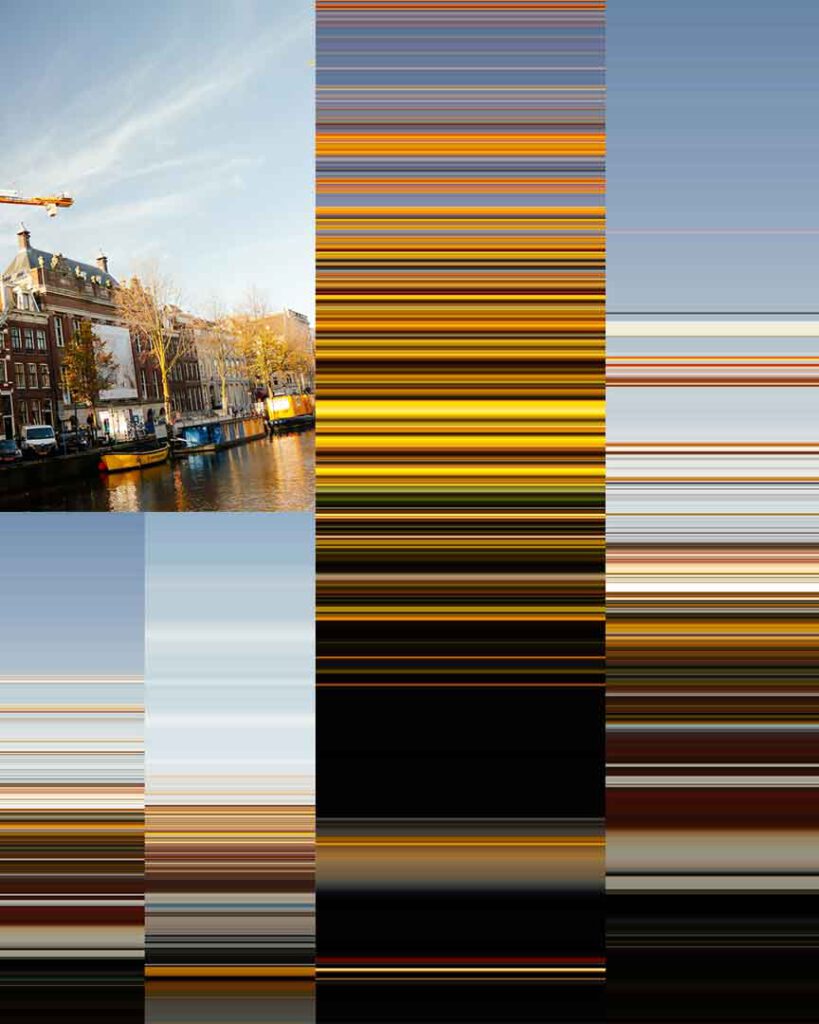
While visually striking, this digital manipulation gradually felt removed from the organic nature of our earlier work. As the project progressed, we realised that this purely digital exploration diverged from our core interest in deconstruction and reconstruction of real-world experiences. Nonetheless, the experiment provided valuable insights into new digital processes and marked an interesting detour before returning to our more tactile, organic techniques.
